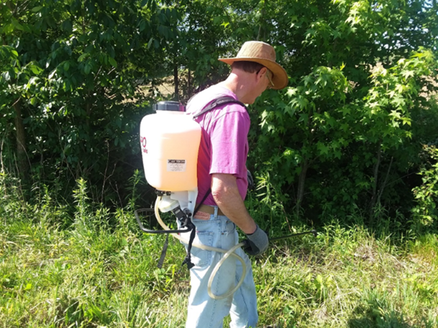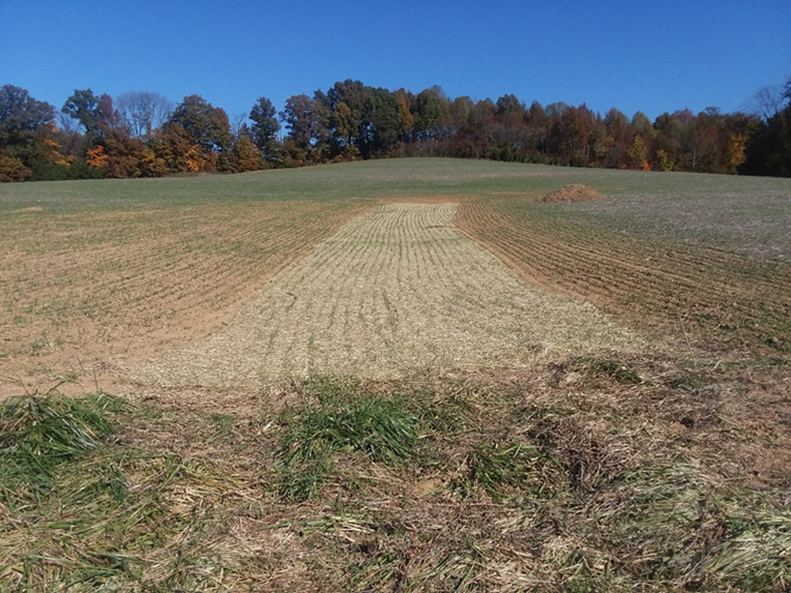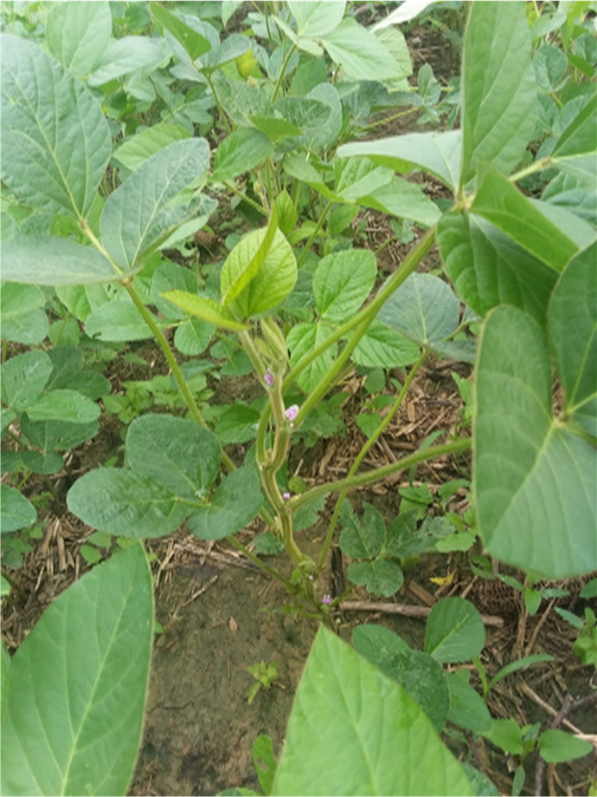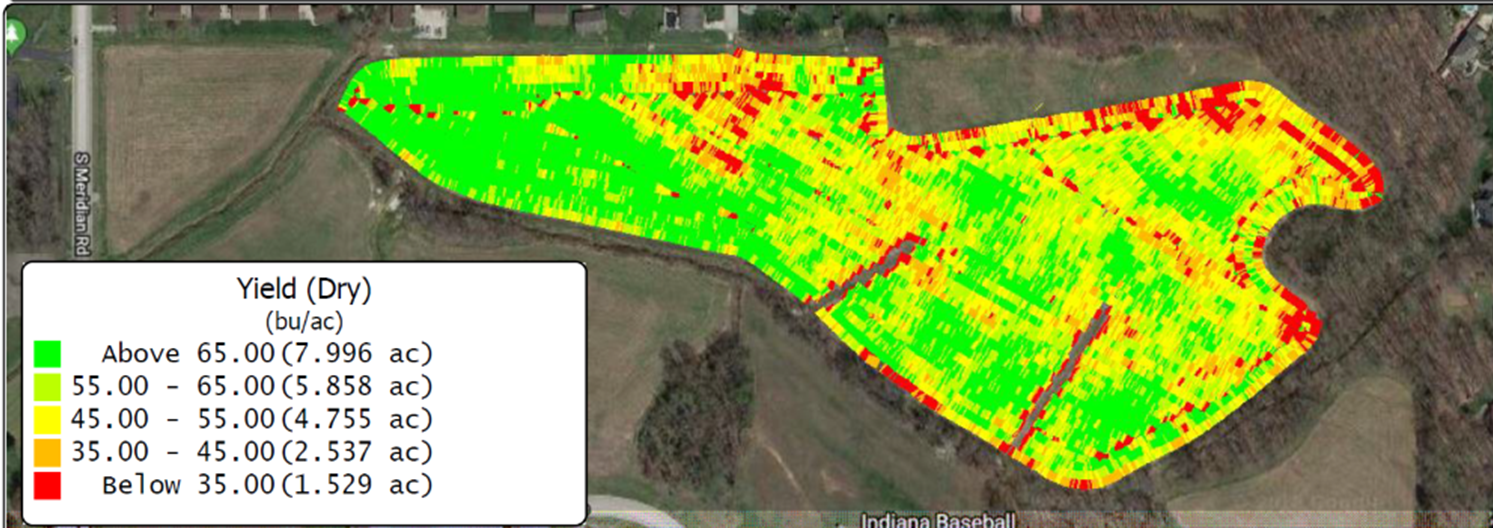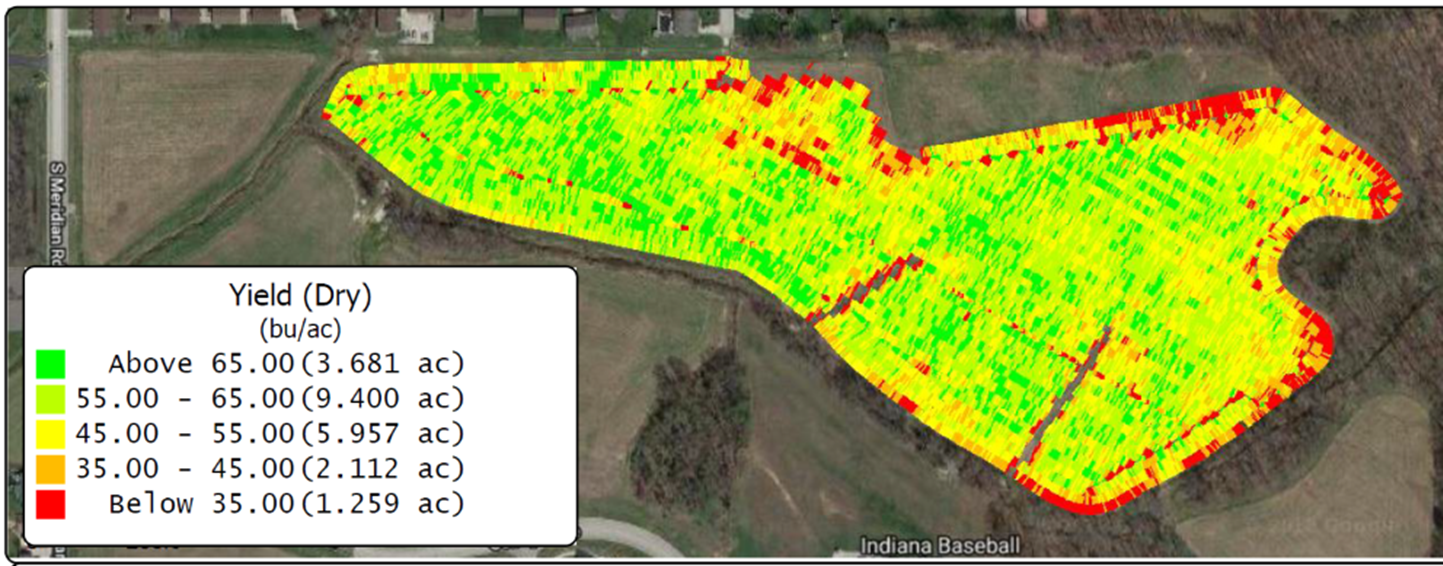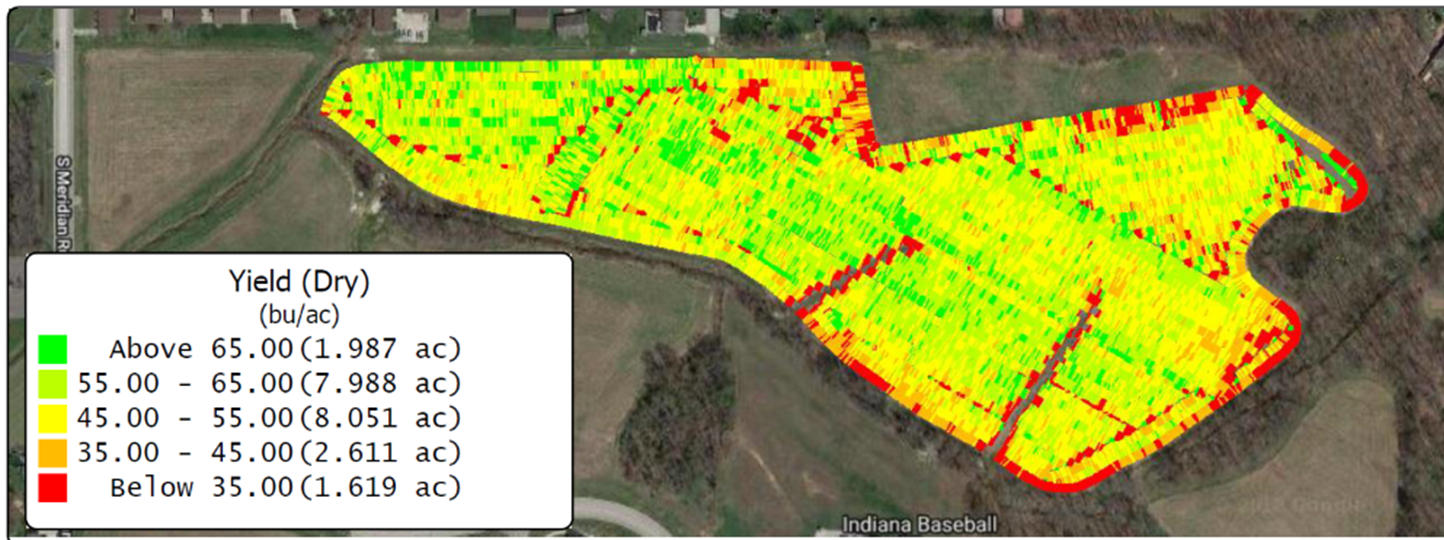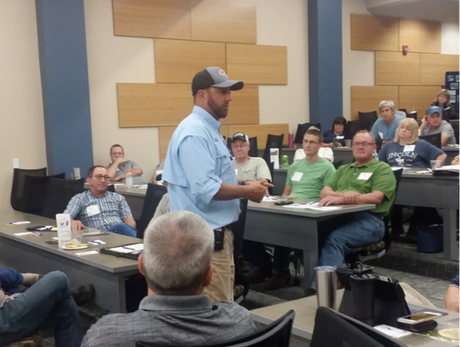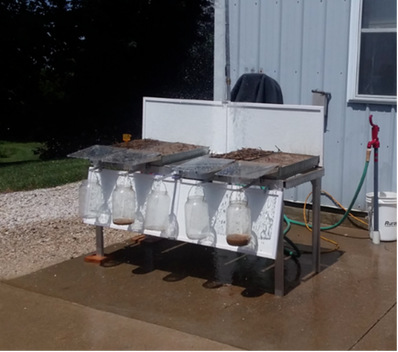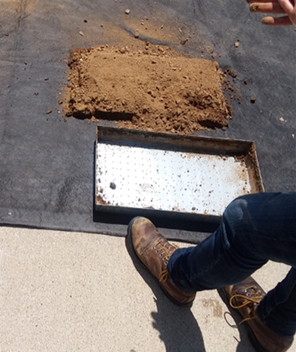| 2018 Annual Report | |
| File Size: | 997 kb |
| File Type: | |
Notes From The Field
|
The improvements to the crop fields over the past six years of thoughtful management are beginning to show visible changes to the land, including increased infiltration of rainwater and a reduction in sediment and nutrient losses. All the improvements will help armor the soil from our increasingly erratic rainfalls and will keep the soil healthy and producing healthy crops.
2018 was a good crop year. The timing was good for all operations, and the rains were generally favorable which resulted in the best bean crop to date. There was significant yield difference in the tilled strip- a 10 bushel an acre loss. Over all the fields yielded 58.95 bushels per acre in 2018. Time was spent maintaining field borders this summer. Invasive species were removed and sprayed. Trees that were beginning to encroach on the grassed strip were felled. Raspberries and other thorny plants and bushes were mowed down. The goal of maintaining these field borders is to allow a place for equipment to move as well as provide a buffer or filter strip to prevent erosion of soil from the fields. |
This is the first year that fungicide was used. Cocklebur was an issue in areas with poor soybean stand and deer browse. Initially, it was controlled with an herbicide spray that stunted its growth. However, late in the season several patches broke through the canopy of the soybeans. Giant ragweed continued to show up but was manually removed before going to seed this year.
Some post-harvest dozer work extended the two waterways, repaired diversions, and added another diversion. This minor repair work will cause some short-term compaction to the soil, but in the long term should channel the rainwater runoff into the grassed waterways and reduce offsite sedimentation and nutrient loss. The work was completed, and the fall cover crop drilled before any rain events. The cover crop has grown effectively and has put down a good root system. To date any erosion damage has been limited.
The yield maps from multiple years were reviewed in December 2018, and overall yield improvements were noted. Also noted was a reduction in yield of a tilled strip versus an adjacent no-tilled area. Since its inception in 2012, the LSI management strategy has maintained an area of land that is conventionally tilled, while the remainder of the crop ground is no-tilled. This graphic shows the build in yield when comparing crops harvested in 2014, 2016 and 2018.
Some post-harvest dozer work extended the two waterways, repaired diversions, and added another diversion. This minor repair work will cause some short-term compaction to the soil, but in the long term should channel the rainwater runoff into the grassed waterways and reduce offsite sedimentation and nutrient loss. The work was completed, and the fall cover crop drilled before any rain events. The cover crop has grown effectively and has put down a good root system. To date any erosion damage has been limited.
The yield maps from multiple years were reviewed in December 2018, and overall yield improvements were noted. Also noted was a reduction in yield of a tilled strip versus an adjacent no-tilled area. Since its inception in 2012, the LSI management strategy has maintained an area of land that is conventionally tilled, while the remainder of the crop ground is no-tilled. This graphic shows the build in yield when comparing crops harvested in 2014, 2016 and 2018.
Images provided by Rick Applegate from Precision Farming Solutions. The tilled strip in Field 2 is very noticeable in the 2018 images.
Education & Demonstration
In August, the SWCD hosted Adam Daugherty, the District Conservationist (NRCS) from Coffee County Tennessee for a field day at VUJC. In his talk “Moving from No-Till to a Higher Functioning Agro-Economical System”, Adam reviewed the strides the fields made physically and biologically, and the economic impacts that resulted from the field improvement. Adam encouraged producers to plant multispecies cover crop mixes. He encouraged attendees to consider the whole system in their fields and to work with that natural system. He sees value in allowing cover crops to grow tall, increase root mass, and to plant into them green (planting a cash crop into standing cover crops then terminating the cover crops by crimping or herbicide application later). He noted that there was no silver bullet for soil health and encouraged everyone to be willing to try new things- different things. He asked us not to consider one failure a reason to give up on trying but instead to keep pushing forward keeping living roots in the ground feeding the microbes year round.
Attendees enjoyed an open question/ answer discussion time with Adam. With an impressive 50% of the acres in Coffee County currently under No-Till Cover Crop management systems, Adam was a wealth of knowledge that was tapped by local conservationists. The attendees also learned how to measure their soil’s health by evaluating indicators, such as compaction, infiltration, etc. Slake tests, Slump tests, and active carbon tests were demonstrated.
A rainfall simulator was demonstrated outside. One inch of rain was mechanically dispersed over several trays holding different types of soil. It was interesting to note that water did not infiltrate down into the conventionally tilled sample. The rain compacted the top layer of soil and prevented water from entering the soil profile. Falling water on the conventionally tilled soil created ponding and visible erosion into the water collection bucket. Water falling on cover cropped soil run off clear and infiltrated in to the soil profile. When the soil pans were flipped over at the conclusion of the rainfall the conventionally tilled soil was bone dry except for the top ¾ of an inch of soil. Water had been unable to infiltrate into the soil profile!
Attendees enjoyed an open question/ answer discussion time with Adam. With an impressive 50% of the acres in Coffee County currently under No-Till Cover Crop management systems, Adam was a wealth of knowledge that was tapped by local conservationists. The attendees also learned how to measure their soil’s health by evaluating indicators, such as compaction, infiltration, etc. Slake tests, Slump tests, and active carbon tests were demonstrated.
A rainfall simulator was demonstrated outside. One inch of rain was mechanically dispersed over several trays holding different types of soil. It was interesting to note that water did not infiltrate down into the conventionally tilled sample. The rain compacted the top layer of soil and prevented water from entering the soil profile. Falling water on the conventionally tilled soil created ponding and visible erosion into the water collection bucket. Water falling on cover cropped soil run off clear and infiltrated in to the soil profile. When the soil pans were flipped over at the conclusion of the rainfall the conventionally tilled soil was bone dry except for the top ¾ of an inch of soil. Water had been unable to infiltrate into the soil profile!
Looking To The Future
For the LSI 2019 growing season, the overall corn bean rotation previously utilized will be slightly amended. Efforts are being made to increase the organic matter, or crop residue, plant roots, etc., in the top layers of the soil. Wheat was planted in one of the fields, with the intent to follow with a wide variety cover crop mix planted in June 2019. The LSI management team will evaluate the impact of this summer cover crop. The remainder of the property will be planted in corn, with corn also planned for the 2020 crop year. This will be done to demonstrate and evaluate the impact of summer covers. The SWCD will host field events in summer 2019 to showcase the diverse summer crop, and other physical changes noted as the health of the soil improves.
If you would like a chance to tour the LSI property to see these changes in person or have questions about adopting cover crops please call Melissa Ruschau to arrange a visit (812) 482-1171 ext. 3. The district has purchased a soil health testing kit and is willing to come to your farm for a site visit and evaluation of your soils’ health because after all - Soil health is the root of everything!
